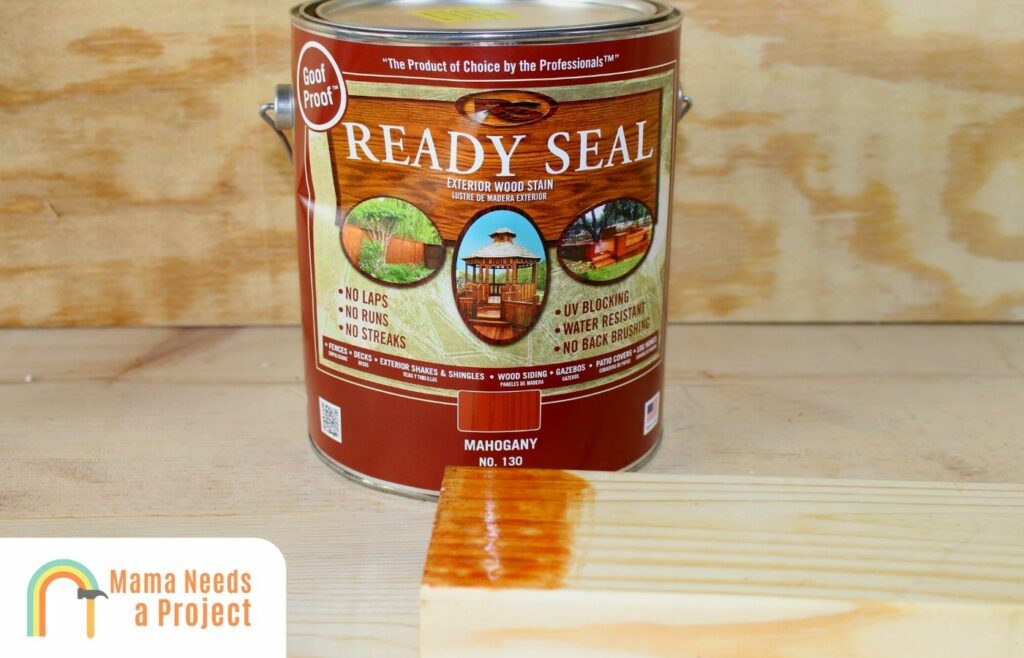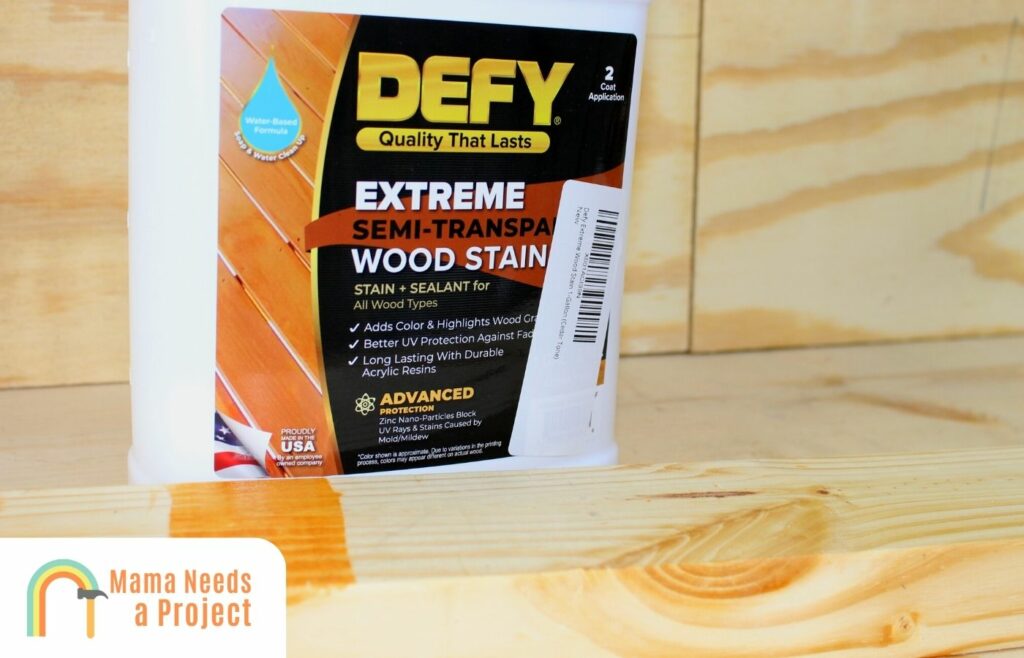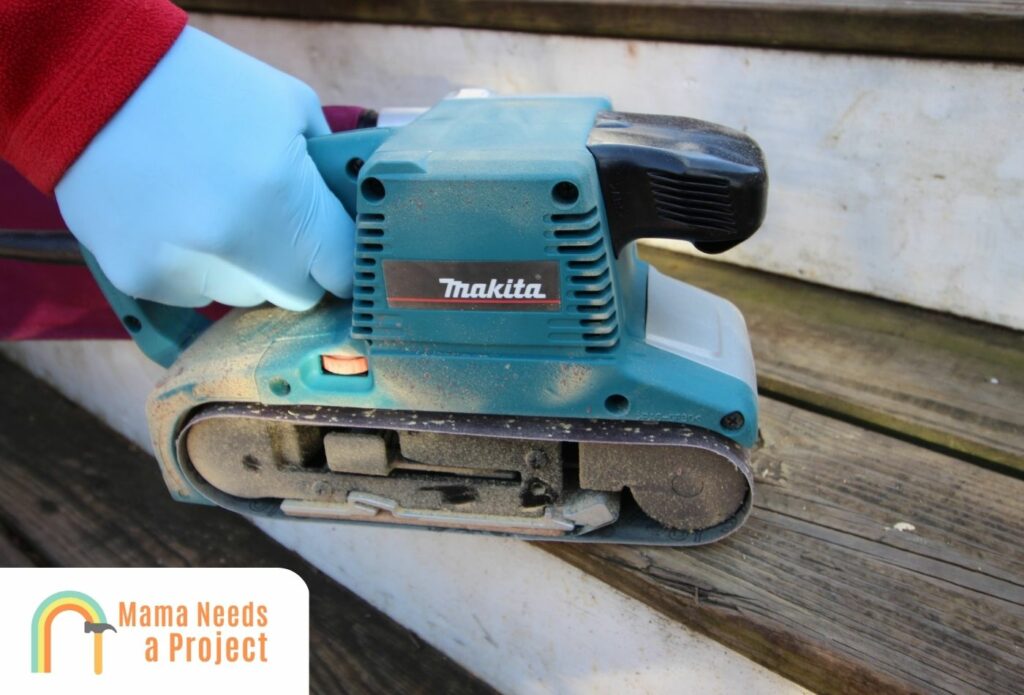How Often to Stain Deck? (Tips to Restaining Your Deck!)
There’s no denying staining your deck can be a grueling task that we all hate, but it is necessary to keep your deck in good shape.
But how often do you have to stain a deck?
In this post, I’ll explore everything you need to know about restaining your deck so you can keep your deck looking amazing. Let’s dig in!
- You should restain your deck every 2-3 years if the stain was applied properly and hasn’t been subjected to adverse conditions regularly.
- But if the stain has been battered by bad weather, pests, and other erosive factors year-round, you should restain your deck annually.
How Often Should You Stain Your Deck?

Most stained decks need restaining every 2-3 years, but your deck may need to be restained yearly if it’s larger, older, or made of subpar materials.
That said, some decks can last longer if they’ve previously been stained with a durable stain and don’t show signs of significant wear.
If it’s been subjected to adverse weather, temperature fluctuations, and pests year-round, it’s best to restain the following spring.
Restaining regularly will help keep the deck in good condition overall, so restaining should be part of your annual deck maintenance routine.
If you don’t wait too long to restain, it won’t be a time-consuming task; drying time for most stains is less than 24 hours.
Factors That Determine How Often a Deck Needs Restaining

Material
Freshly cut wood, otherwise known as “green lumber” doesn’t retain stain well, so if your deck is mostly made of this you’ll probably have to restain annually.
Hardwood decks don’t need restaining as often as softwood decks, mainly because they’re better at resisting the erosive elements that wear down wood and stain naturally.
Kiln-dried wood is better for staining because it’s tougher and retains stain well.
Size
If your deck is large, chances are you won’t apply many coats, which means restaining will be needed at least once a year.
And once the entire deck is stained, it’ll need full coverage every time you restain to ensure the whole thing is one consistent shade.
Age
Does the stain look worn out? Has it been there for years? Then restaining is probably necessary.
But if the stain is especially withered because of non-stop direct sunlight, you’ll probably need to remove it all before new deck stain can be applied.
You don’t always have to remove the current stain to restain effectively, but in this instance you certainly do.
Do some pressure-washing then thoroughly clean the deck with a destainer. After it’s had plenty of drying time, the new stain can be applied.
Previous Stain

If the previous stain was low-quality, you’ll likely have to restain within 6 months to a year. Solid stains have worked out great for me, but there are plenty of fantastic transparent stains as well.
You can check out my favorite deck stains that will last for years.
Recent Weather Conditions
Do you live in a particularly rainy climate? Then you’ll likely need to restain your deck once a year. The same can be said for those who live in humid climates with significant rainfall.
And if you’re in an area that sees bad storms throughout the year, you may need to stain twice during the year, especially if your deck gets damaged.
Still, many homeowners do fine restaining every 2-3 years.
Pests
Just like sunlight, moisture, and other elements, different pests can erode your deck’s finish and the wood surface beneath it.
Fortunately, there are ways to prevent pests from eating away at the deck. Just contact a local exterminator and they’ll tell you your options.
The kind of wood you use matters here, as some woods are more pest-resistant than others.
How to Know When Your Deck Needs to Be Restained
1. Fading
Fading can be caused by a range of things, but the usual culprit is the sun. Of course, all deck stains fade over time, but UV rays can accelerate the fading process if the deck stain isn’t properly protected.
Most deck stains have UV-blockers to prevent fading, but these can only do so much.
To ensure the stain doesn’t get faded or discolored by the sun, apply a polyurethane finish; this will protect the stain from the sun’s rays and other erosive elements.
2. Peeling
When the dark stain starts to peel off the surface, take it as a sign the deck needs restaining.
All deck stains will start peeling eventually, but this shouldn’t happen within a month or two of applying; if this happens it’s probably because you applied the stain incorrectly.
Basically, the stain doesn’t dry properly, and then it’s just a matter of time before moisture, oxygen, and sunlight collectively bring about peeling.
Regardless of why peeling is happening, it’s best to remove all the stain before restaining; this way you can ensure no leftover stain discolors the new stain.
Moreover, you need to refrain from applying too much stain, as this is the number-one cause of premature stain peeling.
Here’s how to paint a deck with peeling paint for more help!
3. Bubbling
Stain bubbling is usually the result of improper application.
If there are too many oxygen molecules in the stain when it’s applied, bubbles are sure to appear eventually.
Bubbles can also appear after water soaks into a fresh coat of stain, so be on the lookout.
If you notice bubbles before the stain is fully dry, you should knock them down with a small, flat surface, like the back of a paintbrush or a ruler.
That said, it’s best to avoid bubbles altogether, since these can enable more damaging elements.
4. Scratches & Chips
If it’s easier to scratch your deck than it once was, take this as a sign the deck needs to be restained.
Stain wears out over time, of course, and eventually it becomes so weak that something as simple as dragging a piece of furniture across the deck can not only scratch but also chip off pieces from the deck boards.
Once you identify numerous scratches and chips, restain immediately so the deck is better protected from structural damage.
5. New Color
There are so many different deck stains available these days, so it’s not an exaggeration to say anyone can find the deck stain color, luster, etc. they’re looking for without much hassle.
For example, here’s what one of my favorite semi transparent stains looks like.

But even if you find the deck stain of your dreams, you may not feel the same way about it years down the road.
If this should happen, it’s best to restain the deck with a new color sooner rather than later; you’ll only detest the current stain more and more if you delay.
Just keep in mind that some stains are harder to remove than others, particularly the darker, oil-based ones.
How Long Will Deck Stain Last
Most oil-based deck stains—if applied properly—last 3 to 5 years.
Water-based stains can last for years too, so long as they’re not subjected to adverse conditions frequently.
To ensure your deck stain lasts for many years, you’ll need to do deck maintenance on a routine basis.
A well-maintained deck won’t need restaining as often, but even the most thorough deck maintenance can’t prevent natural erosive elements from wearing down deck stain.
So if you live in an area that sees a lot of bad weather, there are a lot of pests around, or the temperature fluctuates routinely, your deck stain may last a year (at best).
Deck Restaining Tips
Watch the Weather
Before you start staining, check the 3-day forecast; three days of partly cloudy weather is best, since it’s likely the stain will get just the right amount of sunshine.
You shouldn’t apply stain when there’s rain in the near-term forecast, as it’ll be hard to protect.
If water soaks into the drying stain, it won’t dry properly and the end result will be unsightly.
Check out these best times to stain a deck for more help.
Surface Prep Is Key
Prep work, i.e. prepping the deck material before staining, is paramount.
First, you should use one of these wood fillers for decks to patch any large gaps or cracks in your wood.
Then, the surface should be cleaned and lightly sanded in advance so the stain can easily soak into the wood’s pores.

To open up the pores, lightly sand with sandpaper. You can use one of these power sanders for decks to speed up the process.
Looking for more help? Check out the video below!
The Stain Should Complement the Wood
If a beautiful deck is what you’re after, it’s best to choose a stain that’ll complement the wood it’s being applied to.
So if the deck is made of dark, hardwood boards, it’s best to use a darker, solid stain whereas semi-transparent stain is best for lighter softwoods.
Of course, these are not hard and fast rules, but you’ll avoid surface bleed-through if you adhere to them.
Apply Thin Coats
When deck staining, you should only apply thin coats. This way you don’t apply more stain than is necessary, which can lead to a range of problems.
Especially if you’re using an oil-based stain, you need to pay attention to the thickness of coats, since these stains are more viscous.
Final Thoughts
To recap, how often your deck will need restaining is determined by a variety of factors.
Generally speaking, restaining should be done every 2-3 years, whether you use water-based or oil-based stain.
And if your deck is exposed to adverse conditions for most of the year, you may even need to restain annually.

